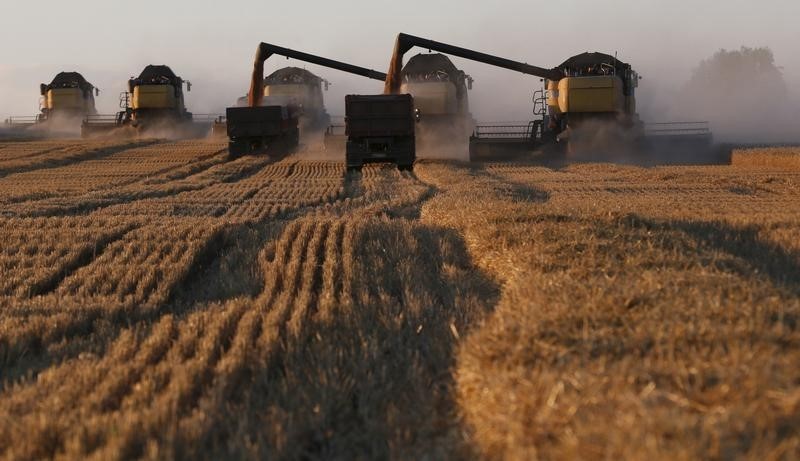By Karl Plume
CHICAGO (Reuters) - A developing La Nina is expected to bring warmer- and drier-than-normal weather to the central and southern U.S. Plains this winter, likely worsening a drought in the country's top winter wheat-producing area, the National Oceanic and Atmospheric Administration (NOAA) said on Thursday.
U.S. farmers are currently planting winter wheat that they aim to harvest early next summer amid an expanding drought that has raised concerns about harvest prospects and elevated prices recently to 3-1/2-month peaks.
Dryness in the Plains and other key wheat areas around the world, including top-exporter Russia, is expected to thin global supplies of the staple crop to the lowest in nine years, according to the latest U.S. Department of Agriculture forecast. The United States is the world's fifth largest wheat exporter.
"We anticipate widespread moderate to extreme drought will persist across much of the Great Plains and portions of the central Rocky Mountains," Jon Gottschalck, operational prediction branch chief at NOAA's Climate Prediction Center, said as the agency released its winter weather outlook.
Drought expanded this week to encompass 52% of U.S. winter wheat areas, up from 44% two weeks ago, according to National Drought Mitigation Center data.
While the Plains are likely to remain dry, a wetter pattern in the Great Lakes and Ohio River Valley regions should help boost Mississippi River water levels later this winter, NOAA said.
Such a rise could aid barge shipping in the biggest U.S. grains export corridor after historically low water disrupted crop movement for a third straight harvest season this year.
"That will be very helpful for the Mississippi River as a whole because a large fraction of that (water) comes from the Ohio River and the central Mississippi River Valley," Gottschalck said.
The Mississippi River at Memphis, Tennessee, is forecast to recede by the end of this month to within less than three feet of an all-time low set a year ago, according to NOAA data.
